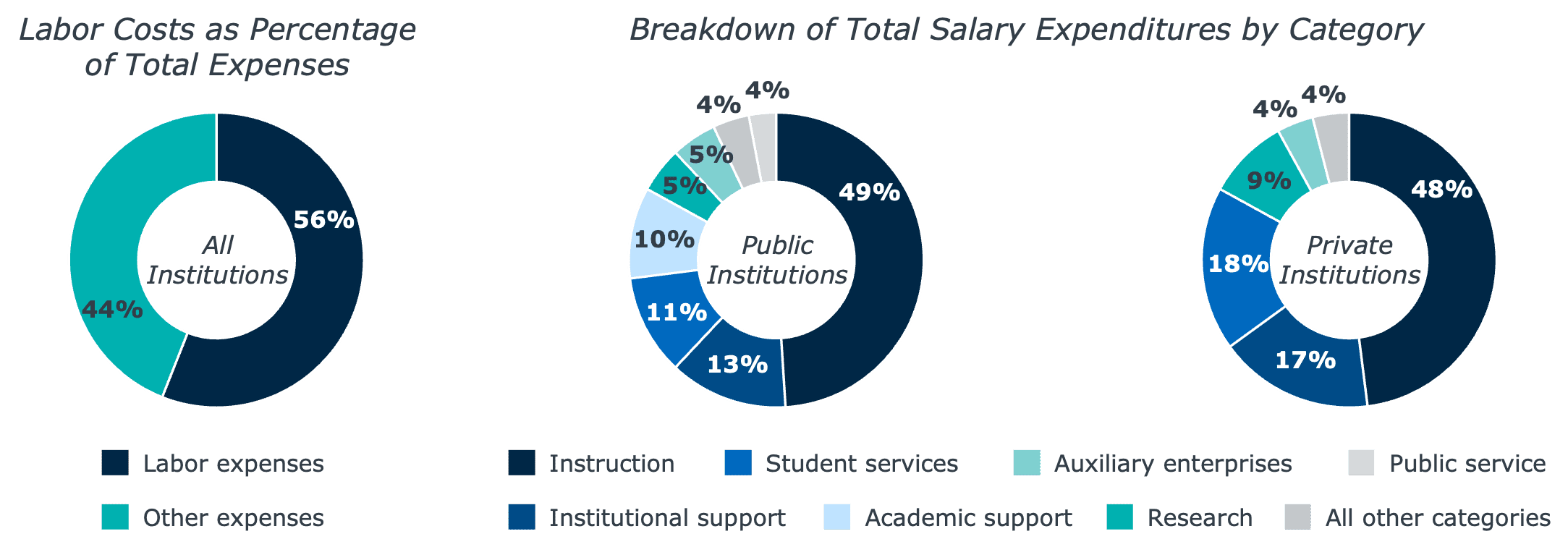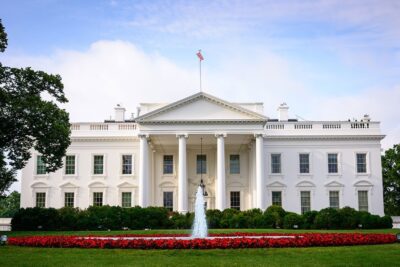How provosts are approaching policy pressures and academic program innovations
In late March, EAB hosted a two-day roundtable that allowed provosts to connect with their peers, discuss shared challenges and potential solutions, and reflect on their role in shaping the future of higher ed. At a time when provosts are navigating a wave of policy changes and new threats to the foundations of the academic enterprise, these connections are more important than ever. We enjoyed watching new relationships form and a strong sense of mutual support emerge throughout the event, reinforcing that provosts are not facing these challenges alone.
Below are four takeaways from the group’s discussion.
1. DEI and immigration policy changes are top-of-mind right now, with federal aid disruptions a major long-term concern
Unsurprisingly, federal policy was front and center during many sessions, as provosts grapple with how to respond to new policy changes and support faculty, staff, and students amid so much uncertainty. Many attendees spoke about the value of investing personal time in more informal one-on-one and small group conversations, which allows them to signal the institution’s ongoing commitment to monitoring policy impacts and engaging in constructive dialogue around policy issues.
Attendees also had the opportunity to pulse-check peer priorities, with most focused on DEI, immigration, and international enrollment. For example, we discussed the potential impacts of travel bans on job offers for faculty in newly restricted countries and international students’ summer plans. Several provosts also raised the implications of DEI policy changes on the academic portfolio and curricular requirements, including the shared governance challenges this can create.
Beyond DEI and immigration, there was a sense among the group that forthcoming changes to federal financial aid could be even more disruptive to institutional finances, student access and affordability, and the broader enrollment landscape.
-
Related resource
Use EAB’s Federal Policy Navigation Suite to make informed strategic decisions on the issues that need attention and minimize debate about scenarios that are unlikely to occur.
2. Enrollment and financial pressures prompt tough conversations on faculty workloads
The demographic cliff is here, and with more students opting out of college and budgets tightening, campus leadership teams are under growing pressure to mitigate costs. Since labor is a major component of academic affairs budgets, provosts must grapple with difficult decisions regarding instructional efficiency and faculty capacity.
Resources tied up in a large fixed labor cost base

Attendees engaged in a robust conversation around faculty workloads, highlighting the difficulty of assessing faculty workload consistently across academic units and the challenges of initiating these conversations without encountering faculty pushback. Many focused on revisiting research productivity and service expectations, such as formalizing what counts as service to avoid inflating workloads and prompting unnecessary funding or course release requests.
-
Related resources
Refer to EAB’s Academic Costs Infographic and Academic Vital Signs research to pinpoint avenues to maximize academic cost savings as financial pressures escalate.
3. Academic portfolios must evolve to meet student and employer expectations
More students are seeking programs with provable ROI and career pathways. At the same time, employers increasingly expect recent graduates to demonstrate baseline AI competency and possess a blend of technical and soft skills.
Leaning into interdisciplinary programs
One potential way for academic leaders to respond is by investing in interdisciplinary programs that equip students with cross-cutting competencies and experience solving real-world problems. However, launching and managing these programs is easier said than done, with provosts emphasizing the hurdles to getting faculty involved and navigating competition between academic units.
One anecdote that resonated across the room described a five-year effort to design an interdisciplinary minor, which was delayed by units that couldn’t agree on curricular requirements due to competing interests and agendas. Other attendees shared challenges in deciding where interdisciplinary programs will live and who will manage them.
To position interdisciplinary programs for success, leaders should set clear goals and purposes for the programs, designate a clear leader, home, and reporting line for the programs from the start, and ensure the curriculum incorporates collaborative and applied courses allowing students to apply interdisciplinary thinking to solve complex, real-world challenges.
Six hallmarks of the most successful interdisciplinary undergraduate programs
-
Meets student interests
-
Aligns with employer demand
-
Benefits from clear leadership and structure
-
Rewards unit and faculty participation
-
Minimizes additive costs
-
Meaningfully integrates disciplines
Preparing graduates for an AI-infused future
More broadly, provosts must prepare for the impacts of AI across nearly every field, which will require curricular changes to equip students with the right skills for the future of work. EAB recommends focusing on revising curricula in areas most vulnerable to disruption, like finance, cybersecurity, and marketing.
However, one challenge shared by attendees is ensuring faculty have sufficient AI literacy to teach these skills in their courses. While many institutions now offer AI literacy training, requiring faculty to participate can be challenging. One provost shared that tapping faculty champions led to a huge jump in workshop demand, with sessions now filling up within 30 minutes of open registration, and faculty are calling for more opportunities to participate.
There also is the need for ongoing dialogue and training around AI ethics and responsible use, which provosts agreed universities are uniquely well-positioned to take the lead on. Several attendees spoke about the importance of teaching students to differentiate fact from fiction in AI outputs and emphasizing AI’s role in enhancing rather than replacing learning and coursework.
-
Related resources
Visit EAB’s Construction Kit for Faculty AI Resources and Compendium of AI Applications in Higher Education for tools to make informed decisions on AI investments and strategies to promote teaching and learning.
4. Effective collaboration with deans and chairs is more important than ever
Given the magnitude of pressures institutions are facing, provosts must increasingly rely on and collaborate with academic unit leaders to advance institutional goals, implement strategy, and communicate centralized messages to their faculty. Yet, many attendees shared that there is often a disconnect between themselves and their deans. On top of that, many academic unit leaders haven’t received training on key skills, especially around budget, which can further stall progress.
As a result, provosts are turning their attention to deepening their relationships with academic unit leaders and, in the long term, strengthening their academic leadership bench. Several attendees spoke about fostering a team mindset among their deans through more regular team check-ins along with conversations about campus-wide strategy and resource allocation decisions. At the same time, they are also investing in one-on-one coaching and development using tools like 360-degree evaluations and tailored training to address skill gaps.
-
Related resources
Contact your EAB Strategic Leader about an Academic Budget Scenario Workshop for academic unit leaders on your campus.

More Blogs

Responding to federal policy shocks: What we learned from nearly 50 higher ed institutions

University research is at a crossroads. Here are three key questions academic leaders must answer.
